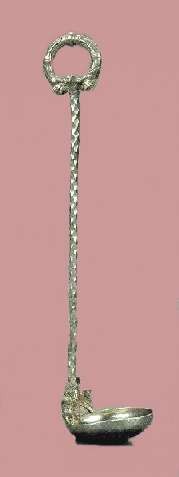
|
Silver
Height 22.7 cm.
diameter of bowl 4.7 cm.
weight 88.7 gr.
Usak Museum
Rising from the shallow bowl is a faceted stem, its lower terminal in the form of a winged hybrid creature with a lion's foreparts, flanked by a pair of sphinxes, and the open loop of the upper terminal decorated also with hybrid creatures. The head and forelegs of the lion of the lower terminal extend into a rectangular attachment plate which grips the rim of the bowl from both sides and is fixed by rivets. The paws are shown as if grasping the rim, the downward facing head descending beyond the rim. The animal's body is feathered and detached wings rise parallel to the handle on either side. The two sphinxes are soldered to the rim of the bowl, crouched back to back with heads turned as if looking at the winged lion. Their wings are of a smaller dimension, but complement in shape and feathering those of the lion. Two long locks of wavy hair hang over one shoulder of each sphinx. The top of the stem is in the form of a bifoliate lotus. The open ring attached to this finial has at each side a hybrid creature whose forelegs are soldered to each side of the lotus. The forepart of each animal is in the round, the rest of the body in low relief on the contour of the loop. The head itself is composite, feathered, with the face of an eagle and the ears and crested mane of a horse. The out stretched forelegs are those of a lion. The body has eagle's wings, with two tiers of feathers, and the legs, muscular around the thighs, end in powerful curving talons. A long fine tail extends along the outer curve of the loop to lust beyond the talons. At the apex the loop is encircled by a prominent rounded moulding, flanked on either side by a fine rounded ridge. The bowl of the ladle was raised, the stem, loop and sphinxes cast separately.
|
|
The rich figural decoration and unusual faceted handle stem make this by far the most ornate of the ladles from the Cure tumuli and of all other known examples. {otuses appear at the top of the stem of two ladles from lkiztepe (nos. 29 and 30) and animals with foreparts in the round and the rest of the body in low relief also occur on no.30.
|
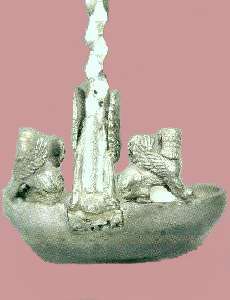 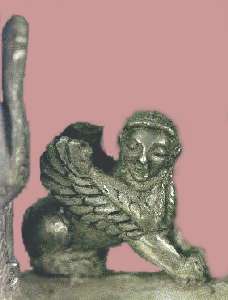
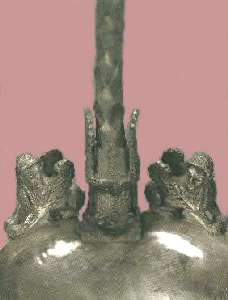 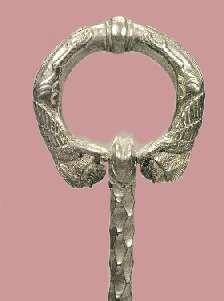
|



















